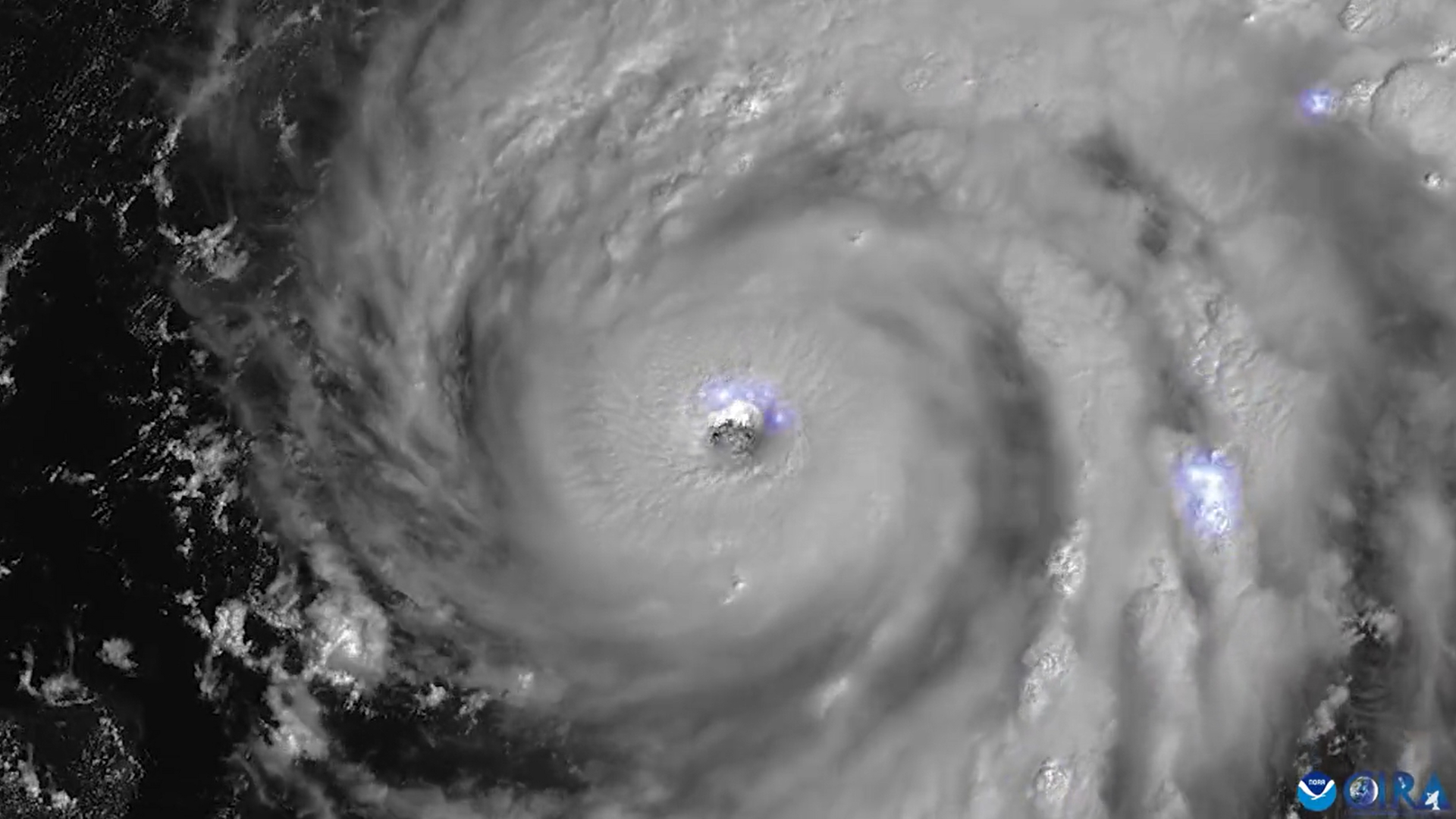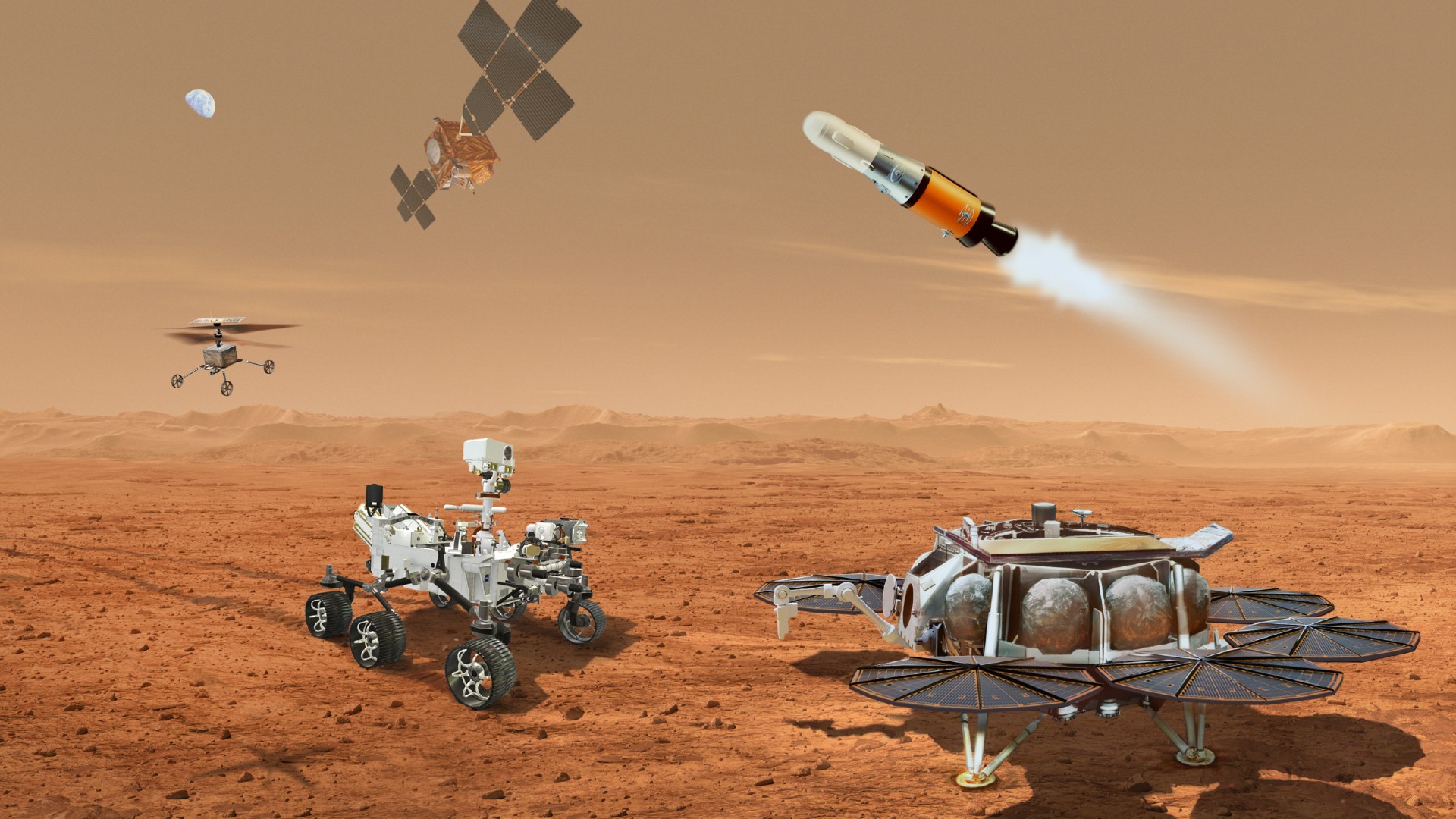Hurricane Ian approaching Florida as powerful Category 3 storm, satellite images show
Hurricane Ian is churning across the Gulf of Mexico as Category 3 storm as the GOES-16/GOES-East weather satellite watches.
Hurricane Ian battered Cuba and turned toward the west coast of Florida on Tuesday (Sept. 27) as satellites track the harrowing storm from space.
As of Tuesday afternoon, Ian was churning across the Gulf of Mexico as Category 3 hurricane and being tracked by the GOES-16/GOES-East weather satellite operated by the National Oceanic and Atmospheric Administration (NOAA). The satellite captured striking video and images of Hurricane Ian after it crossed western Cuba.
"Re-strengthening is expected later today through Wednesday [Sept. 28]," NOAA's National Hurricane Center (NHC) officials wrote in an afternoon update. "Ian is forecast to approach the west coast of Florida as an extremely dangerous major hurricane."
Video: See Hurricane Ian churn from International Space Station
NOAA hurricane forecasters wrote that Hurricane Ian was expected to cross the Gulf of Mexico on Tuesday and pass west of the Florida Keys Tuesday night. It should reach the west coast of Florida on Wednesday or Wednesday night, NHC officials said. The storm is forecast to make U.S. landfall just south of Sarasota, Florida, Wednesday night, according to the New York Times.
TROPICAL UPDATE: @NOAA's #GOES16🛰️ is monitoring the movement and #lightning with major #Hurricane #Ian this afternoon. Its winds have increased to 120 mph as it continues to push through the Gulf of Mexico. Latest: https://t.co/tVU2sBnFSx #FLwx pic.twitter.com/ChFpLd7j4ySeptember 27, 2022
#HurricaneIan is seen about 260 miles below the space station as the storm was gaining strength south of Cuba and moving toward Florida at around 3pm ET on Monday, Sept 26, 2022. pic.twitter.com/GNef1ptraASeptember 26, 2022
As of Tuesday afternoon, Hurricane Ian was moving northward at about 10 mph (17 kph), with maximum sustained winds reaching speeds of nearly 120 mph (195 kph), NHC officials said.
Heavy rainfall was already reported across parts of Florida, with state officials issuing evacuation orders for some coastal regions, according to the New York Times.
Breaking space news, the latest updates on rocket launches, skywatching events and more!
At NASA's Kennedy Space Center in Cape Canaveral along Florida's eastern coast, mission managers ordered the agency's Artemis 1 moon rocket rolled back into its Vehicle Assembly Building so that it could shelter from the approaching storm inside the cavernous 52-story hangar.
The Artemis 1 moon rocket, NASA's first Space Launch System booster, stands 322 feet tall (98 meters) and was waiting its first uncrewed test flight after weeks of delays and two previous launch attempts.
OVER THE CARIBBEAN- @NOAA WP-3D Orion “Kermit” #NOAA42 flies into the eye of Hurricane #Ian 09.27.22. Credit: Nick Underwood, NOAA. Visit https://t.co/Wv5xRkqsl1 for info on the storm. #FlyNOAA #Science #aviation pic.twitter.com/lUP9JMNfFDSeptember 27, 2022
"At approximately 9:15 a.m. EDT, NASA's Space Launch System (SLS) rocket and Orion spacecraft for the Artemis I mission were secured inside the Vehicle Assembly Building at the agency’s Kennedy Space Center after a four-mile journey from Launch Pad 39B that began at 11:21 p.m. Monday, Sept. 26 ahead of the arrival of Hurricane Ian," NASA wrote in an update. "After the storm has passed, teams will conduct inspections to determine impacts at the center and establish a forward plan for the next launch attempt, including replacing the core stage flight termination system batteries and retesting the system to ensure it can terminate the flight if necessary for public safety in the event of an emergency during launch."
NASA is also tracking Hurricane Ian from the International Space Station. On Wednesday, the space agency will provide live views of the storm at 3 p.m. EDT (1900 GMT) as seen from the orbiting laboratory.
Email Tariq Malik at tmalik@space.com or follow him @tariqjmalik. Follow us @Spacedotcom, Facebook and Instagram.

Tariq is the award-winning Editor-in-Chief of Space.com and joined the team in 2001. He covers human spaceflight, as well as skywatching and entertainment. He became Space.com's Editor-in-Chief in 2019. Before joining Space.com, Tariq was a staff reporter for The Los Angeles Times covering education and city beats in La Habra, Fullerton and Huntington Beach. He's a recipient of the 2022 Harry Kolcum Award for excellence in space reporting and the 2025 Space Pioneer Award from the National Space Society. He is an Eagle Scout and Space Camp alum with journalism degrees from the USC and NYU. You can find Tariq at Space.com and as the co-host to the This Week In Space podcast on the TWiT network. To see his latest project, you can follow Tariq on Twitter @tariqjmalik.


